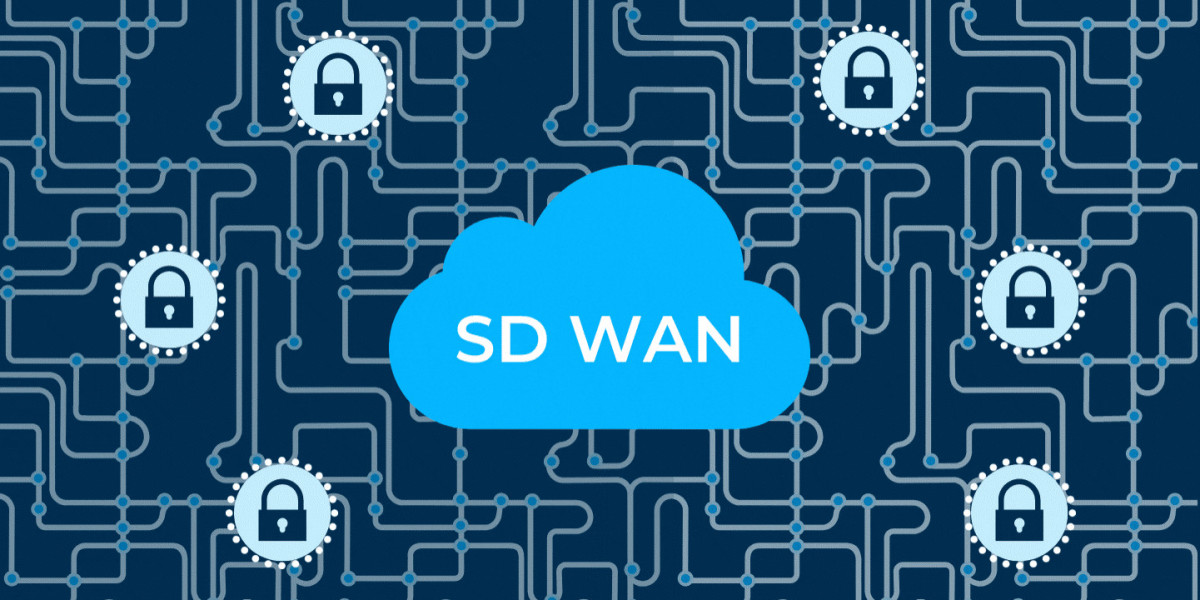In today’s digital-first world, user experience is everything. Whether employees are accessing critical business tools or customers are interacting with web-based applications, performance matters. As organizations shift to cloud-centric infrastructures and remote work models, ensuring fast, secure, and reliable application performance has become a core business priority. One technology has emerged as a transformative force in achieving this goal: SD-WAN technology.
Software-defined wide area networking (SD-WAN) is more than just a buzzword—it's a strategic approach to networking that is redefining how businesses manage and optimize connectivity across multiple locations, cloud services, and application platforms. In this article, we explore how SD-WAN significantly boosts application performance and improves the overall user experience.
Understanding the Importance of Application Performance
Applications have become the lifeblood of modern organizations. From cloud-based productivity tools to customer-facing portals, businesses depend on application performance to maintain productivity, deliver services, and drive growth. Poor performance, lag, or downtime can directly impact:
Employee productivity – when critical SaaS applications or internal systems perform slowly.
Customer satisfaction – as users abandon sluggish websites or malfunctioning apps.
Operational efficiency – when applications don't respond in real-time.
Revenue and reputation – particularly for e-commerce or customer service platforms.
Traditional WAN architectures often fall short in supporting today’s application demands, especially in multi-cloud and hybrid environments. That’s where SD-WAN technology comes into play.
What Is SD-WAN and How Does It Work?
SD-WAN is a virtual WAN architecture that allows enterprises to securely connect users to applications using a combination of transport services—including MPLS, LTE, and broadband internet. Unlike traditional WANs that rely on rigid, hardware-based routers and manual configurations, SD-WAN uses software to manage traffic dynamically and intelligently.
Key capabilities of SD-WAN include:
Centralized control and orchestration
Application-aware routing
Real-time traffic monitoring
Dynamic path selection based on performance metrics
Integrated security policies
This intelligent routing and optimization of data traffic is what enables SD-WAN to significantly enhance application performance and reliability.
How SD-WAN Enhances Application Performance
1. Dynamic Path Selection for Optimal Routing
Traditional WANs often route all traffic through a central data center, which can cause unnecessary latency—especially for cloud-based applications. SD-WAN routes traffic based on real-time network conditions, selecting the most efficient and least-congested path for each application.
For example, video conferencing applications like Zoom or Microsoft Teams benefit from low-latency and high-priority routing. With SD-WAN, these real-time communications can bypass congested routes and maintain smooth performance, even when competing with other traffic types.
2. Application-Aware QoS (Quality of Service)
SD-WAN allows network administrators to classify applications and assign priority levels. This ensures that mission-critical applications—such as VoIP, ERP systems, or CRM platforms—always receive the necessary bandwidth and performance levels.
In contrast, lower-priority traffic (such as social media or software updates) can be routed through less expensive or less performant links. This intelligent resource allocation maximizes both performance and cost-efficiency.
3. Faster Access to Cloud Applications
In a cloud-driven landscape, users increasingly access SaaS applications like Salesforce, Office 365, or Google Workspace. Traditional WAN architectures can cause delays by forcing this traffic through a corporate data center (a phenomenon known as "backhauling").
SD-WAN enables direct-to-cloud connectivity, allowing users to access cloud apps from the nearest point of presence (PoP) or through a local internet breakout. This significantly reduces latency and improves the responsiveness of cloud services.
4. Resilient, Always-On Connectivity
Network disruptions can cripple productivity. SD-WAN mitigates this by offering link redundancy and automatic failover. If one connection degrades or fails, SD-WAN automatically shifts traffic to an alternative path—without interrupting the user experience.
This seamless transition is crucial for uninterrupted video meetings, cloud sessions, or customer interactions. It minimizes downtime and keeps performance steady even in the face of connectivity issues.
How SD-WAN Improves User Experience
Great application performance leads to an improved end-user experience, which is critical for both internal stakeholders and external customers. Here’s how SD-WAN contributes to that:
1. Smooth, Uninterrupted Communication
Voice and video applications are especially sensitive to packet loss, jitter, and latency. SD-WAN mitigates these issues through real-time performance monitoring and remediation techniques, such as forward error correction and packet duplication. The result is crystal-clear voice and video quality that enhances communication and collaboration.
2. Empowered Remote Workforces
With SD-WAN, remote employees can experience the same performance levels as those working from the office. Whether they’re accessing centralized apps or working in cloud-based environments, SD-WAN optimizes their connections and ensures they have a reliable, secure experience—no matter where they are.
3. Improved Customer Interactions
For customer-facing applications—such as e-commerce platforms, support portals, or online booking systems—performance issues can directly impact satisfaction and retention. SD-WAN provides the speed, availability, and reliability needed to deliver a consistently positive user experience.
Additional Benefits That Support Performance
Beyond application acceleration, SD-WAN offers complementary benefits that further enhance performance and user experience:
Simplified network management – Centralized orchestration reduces complexity and ensures consistent policies across all sites.
Cost savings – Organizations can replace or supplement expensive MPLS links with more affordable broadband without sacrificing performance.
Enhanced security – Many SD-WAN solutions include built-in security features such as encryption, firewalling, and segmentation.
Real-World Impact: A Case Example
Consider a national retail chain with hundreds of locations, all using cloud-based POS systems, inventory apps, and customer loyalty platforms. Before implementing SD-WAN, network slowdowns during peak shopping hours affected transaction speed and customer satisfaction.
After adopting SD-WAN technology, the retailer was able to:
Prioritize POS traffic across all locations
Route software updates and low-priority data through less expensive connections
Ensure real-time synchronization with cloud services
Prevent outages by leveraging automatic failover capabilities
The result? Faster transactions, happier customers, and increased operational efficiency.
Final Thoughts: Why SD-WAN is the Future
In an age where every second counts, SD-WAN technology offers businesses a powerful tool to stay competitive. By dynamically optimizing traffic paths, prioritizing critical applications, and providing resilient connectivity, SD-WAN delivers the performance needed for today’s demanding digital environments.
The benefits go beyond the backend. Users—whether employees or customers—experience smoother, faster, and more reliable applications. And in a world where user experience can make or break a brand, that advantage is priceless.









